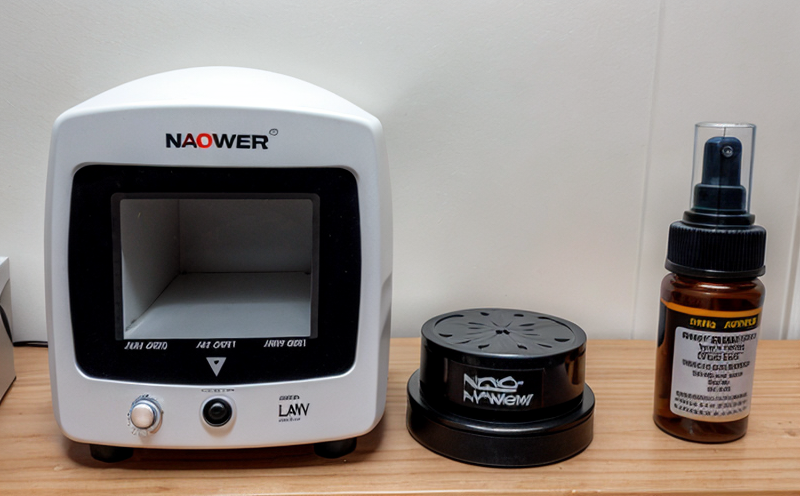ISO 11348 Luminescence Inhibition Testing of Nanoparticles in Water
The ISO 11348 luminescence inhibition test is a critical method for assessing the environmental impact of nanoparticles, especially those that are used in industrial processes or released into water environments. This testing procedure measures how nanoparticles interact with bioluminescent organisms to determine their potential toxicity and ecological risk.
This service is particularly important for industries such as pharmaceuticals, electronics, and manufacturing, where nanoparticles play a pivotal role in product development and performance enhancement. The luminescence inhibition test evaluates the ability of nanoparticles to inhibit the light-emitting properties of these organisms. By measuring this effect, we can assess the potential for nanoparticle accumulation in aquatic environments, which may lead to adverse ecological impacts.
The process involves exposing bioluminescent organisms to a dilute suspension of nanoparticles in water under controlled conditions. The luminescence intensity of the organisms is measured before and after exposure to the nanoparticle solution. A significant decrease in luminescence indicates that the particles have inhibited the organisms' ability to produce light, suggesting potential toxicity.
Our laboratory adheres strictly to ISO 11348 standards to ensure accurate and reliable results. We use state-of-the-art equipment calibrated according to international guidelines. Specimen preparation is meticulous, ensuring a consistent nanoparticle concentration in the water sample for precise testing. Reporting is comprehensive, providing detailed data on luminescence inhibition percentages along with statistical analysis.
The test is essential not only for regulatory compliance but also for guiding research and development efforts aimed at minimizing environmental impact. By understanding how nanoparticles behave in aquatic environments, we can design safer products and processes.
Our service includes a thorough review of the testing protocol to ensure it aligns with your specific needs and regulatory requirements. We provide detailed reports that not only comply with ISO 11348 but also offer insights into potential risks and mitigation strategies.
Applied Standards
The ISO 11348 luminescence inhibition test is based on the International Organization for Standardization (ISO) standard. This method has been validated through rigorous testing to ensure its reliability in evaluating nanoparticle toxicity. The protocol specifies detailed procedures for specimen preparation, exposure conditions, and measurement techniques.
Key components of this standard include:
- Selection of appropriate bioluminescent organisms
- Dilution of nanoparticles into water
- Controlled exposure time
- Measurement of luminescence before and after exposure
- Data analysis techniques to calculate inhibition percentages
The standard is regularly updated to incorporate new scientific findings and technological advancements, ensuring that the test remains relevant and effective in assessing nanoparticle toxicity.
Industry Applications
- Pollution Control: Monitoring the environmental impact of industrial processes involving nanoparticles.
- Nanotechnology Development: Evaluating new nanomaterials for their potential ecological risks.
- Toxicology Research: Assessing the toxicity of nanoparticles in various aquatic environments.
- Regulatory Compliance: Ensuring compliance with environmental regulations regarding nanoparticle use and disposal.
The ISO 11348 luminescence inhibition test is crucial for industries that rely on nanotechnology, as it provides critical data for understanding the ecological impact of their products. This information is vital for developing safer nanoparticles and improving existing processes to reduce environmental harm.
Competitive Advantage and Market Impact
The ISO 11348 luminescence inhibition test offers several advantages that can provide a competitive edge in the market:
Innovation Leadership: By identifying potential risks early, companies can innovate safer products and processes.
Regulatory Compliance: Ensuring compliance with environmental regulations can prevent costly fines and legal issues.
Risk Reduction: Early detection of potential ecological risks allows for proactive mitigation strategies.
Market Differentiation: Companies that demonstrate a commitment to sustainability and environmental responsibility are more likely to attract environmentally conscious consumers.
The impact on the market is significant, as it fosters trust among stakeholders and enhances brand reputation. This service helps companies navigate the complexities of nanotechnology use while ensuring they meet global standards for responsible product development.





